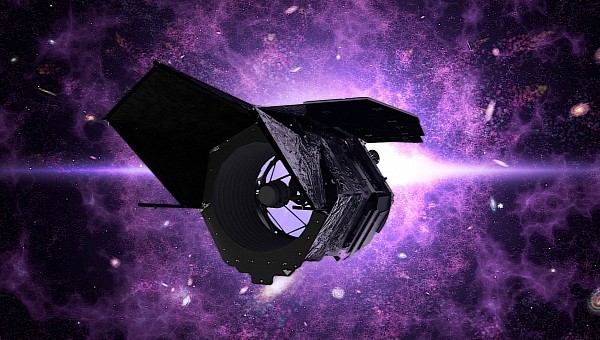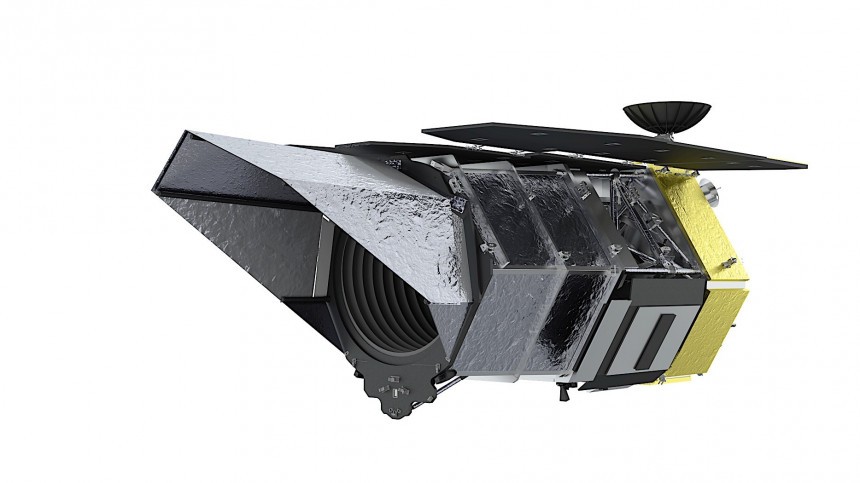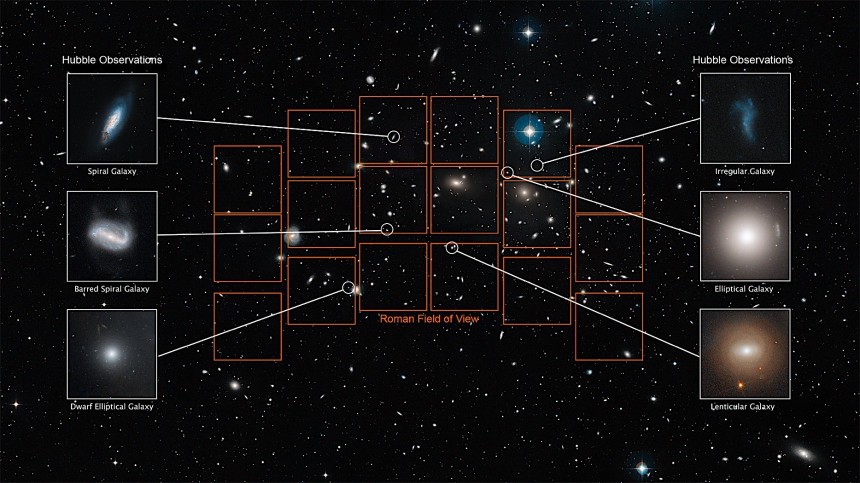At the end of last year, humanity managed to finally get off the ground the James Webb Space Telescope. The thing quickly got into position at our solar system's second Lagrange point, from where it started to look into our Universe’s past.
In the months it has been operational, Webb sent back stunning images of Jupiter and Neptune like we’ve never seen them before, of the Cartwheel and Phantom galaxies, it tracked the effects of the DART mission impact, and gave us an amazing view of the Pillars of Creation.
But Webb is just the beginning in a new approach to telescopes that are meant to unlock the secrets of our Universe. Others would be the SPHEREx we’ve already discussed at the beginning of October, and the Nancy Grace Roman Space Telescope we’re here to discuss today.
Initially designated as the Wide Field Infrared Survey Telescope (WFIRST), the Roman (or the Roman Space Telescope) takes its name after the American astronomer who was considered the mother of the Hubble.
Like most other such hardware before it, the Roman has a very specific set of jobs to do - it’ll use infrared to look into stuff like dark energy and exoplanets. If all goes well, a Falcon Heavy rocket should carry it into space, but no sooner than 2027.
The Roman comprises the main telescope, based on a 2.4 meter (7.9 feet) wide primary mirror, and two specialized instruments, namely the Wide Field Instrument (WFI) and the Coronagraphic Instrument (CGI).
The 300-megapixel WFI is in fact a multi-band visible and near-infrared camera which the telescope will use to look at the sky. It’s a potent piece of equipment, one that should give the Roman a field of view that is about 100 times wider than what Hubble had to offer. That means it can capture more of the sky in less time, thus speeding up the rate at which new discoveries are made.
Being the primary instrument of the Roman, it will be used to look out into the Universe taking advantage of microlensing, in a bid to find no less than 2,600 exoplanets in about five years, the expected initial duration of the mission.
The CGI on the other hand is, as its name says, an instrument meant to block out the direct light of a star after the WFI detects a planet around it, effectively allowing the Roman telescope to directly see planets. That’s a big step forward compared to today’s systems, with most of them using indirect observation to tell if a planet is there or not. This is the first instrument of this kind NASA is sending into space and, it says, "1,000 times more capable than any previously flown."
Being an infrared telescope, the Roman will be capable of seeing through clouds and dust, potentially revealing unimaginable things about the alien worlds. And they’ll all be located in places of the sky not previously looked at with previous telescopes such as the Kepler or TESS. In all, Roman will spy on 3 square degrees of the heavens, tracking some 200 million stars located in some cases at distances in space and time of about 10,000 light years.
Aside from looking at and for planets, the telescope will allow scientists to look around for dark energy, and possibly come up with an explanation as to why the expansion of the Universe is accelerating.
Hoping that no delay will keep Roman on the ground for years, as it happened with Webb, we should get the first results of the science it can perform by the end of the decade. All the telescope’s findings will be “publicly available immediately after processing and delivery to the archive,” but most importantly NASA will also allow scientists to “study the cosmos in their own way, from the nearest exoplanets out to clusters of distant galaxies.”
But Webb is just the beginning in a new approach to telescopes that are meant to unlock the secrets of our Universe. Others would be the SPHEREx we’ve already discussed at the beginning of October, and the Nancy Grace Roman Space Telescope we’re here to discuss today.
Initially designated as the Wide Field Infrared Survey Telescope (WFIRST), the Roman (or the Roman Space Telescope) takes its name after the American astronomer who was considered the mother of the Hubble.
Like most other such hardware before it, the Roman has a very specific set of jobs to do - it’ll use infrared to look into stuff like dark energy and exoplanets. If all goes well, a Falcon Heavy rocket should carry it into space, but no sooner than 2027.
The 300-megapixel WFI is in fact a multi-band visible and near-infrared camera which the telescope will use to look at the sky. It’s a potent piece of equipment, one that should give the Roman a field of view that is about 100 times wider than what Hubble had to offer. That means it can capture more of the sky in less time, thus speeding up the rate at which new discoveries are made.
Being the primary instrument of the Roman, it will be used to look out into the Universe taking advantage of microlensing, in a bid to find no less than 2,600 exoplanets in about five years, the expected initial duration of the mission.
The CGI on the other hand is, as its name says, an instrument meant to block out the direct light of a star after the WFI detects a planet around it, effectively allowing the Roman telescope to directly see planets. That’s a big step forward compared to today’s systems, with most of them using indirect observation to tell if a planet is there or not. This is the first instrument of this kind NASA is sending into space and, it says, "1,000 times more capable than any previously flown."
Aside from looking at and for planets, the telescope will allow scientists to look around for dark energy, and possibly come up with an explanation as to why the expansion of the Universe is accelerating.
Hoping that no delay will keep Roman on the ground for years, as it happened with Webb, we should get the first results of the science it can perform by the end of the decade. All the telescope’s findings will be “publicly available immediately after processing and delivery to the archive,” but most importantly NASA will also allow scientists to “study the cosmos in their own way, from the nearest exoplanets out to clusters of distant galaxies.”




















